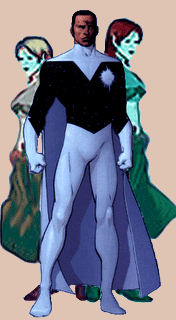|
Rant. Muse. Eat. Sleep. Recycle. |
|

Previous Posts
Fellow Bloggers
Links |
Thursday, August 11, 2016 Slaughterhouse Live
An article I wrote for the River Cities Reader (Davenport, IA). I went undercover to investigate the IBP meat packing plant in nearby Joslin, IL. There had been several ICE raids and the Hispanic community felt they were being targeted. For example, raids typically occurred on paydays, which meant those detained and deported lost their bi-weekly wages. More importantly, the raids seemed to do nothing to harm IBP's hiring of more Hispanic and Asian workers.
Slaughterhouse
Live
I know I'm in there, somewhere, but damned if I can find me. Banshees in my head call me back to the inky blackness of sleep. Demonic phrases like, "Call in sick" and "You don't need this job," cajole me. But, those are minor incantations. Satan is in the details. There's a pain in my left shoulder like a heated Ishanti Dagger being jammed into the socket. My right ring finger is the bloated lead singer in a hellish band of swollen digits, screaming in pain. My left hand is sore and I can't close my right hand into a fist. I finally rise out of bed; I have to be at work by
Since the INS (Immigration &
Naturalization Service) raids two weeks ago, much has been mentioned in the
press about IBP's hiring practices. A standard statement made by sympathizers
of the 142 immigrants arrested by the INS is that employment at IBP is
undesirable, something only immigrants would even consider. Such publicity is
almost beyond the realm of spin control: "Sure, the pay is lousy, but the
work is hard and the hours are long."
What's wrong with taking home a paycheck
from IBP if their checks don't bounce? I was brought up to believe there was
nothing dishonorable about physical labor -- in the abstract.
So, I applied for a job at the Joslin,
I possessed no loathing for the assembly
line process; my American automobile was made on an assembly line. What I
wanted to know was why IBP had such a bad rap among the working class.
IBP is based in
However, my own research had turned up
more interesting nuggets than those offered by a somber talking head, who
claimed to be IBP president Bob Peterson. I say, "claimed" because if
I made more than $6,000,000 a year -- as president and CEO Robert Peterson is
listed in
For instance, Video Bob didn't mention
that, early in its history, when it went by the name Iowa Beef Packers, the
company put your neighborhood butcher out of business. In the early 1960s, the
company's highly automated plants were staffed by local unskilled workers; IBP
paid better than other meatpackers, but offered few fringe benefits. Employees
organized and, in 1965, walked out over the right to strike. Union relations
eroded further two years later when the company began cutting meat into smaller
portions -- minus fat and bone -- for shipping, thus reducing supermarkets'
need for butchers.
By 1969, the company grew to eight plants
in the
That's when things really began to get interesting.
IBP's civil suit elicited decidedly
uncivil behavior; vandalism, death threats, shootings, and 56 bombings (one at
an IBP vice president's home) ensued over the next several months in a struggle
based, in part, on demands for a raise of 20 cents an hour. The company
eventually won $2.6 million for damages suffered in the strike.
In 1970, the company changed its name to
Iowa Beef Processors. Its takeover of two Blue Ribbon facilities in
In the early 1970s, IBP's co-founder,
Currier Holman, paid a mob-related meat broker almost $1 million to ensure that
unions wouldn't interfere with
As IBP began new operations in
During the 1980s, IBP was fined $2.6
million by OSHA for unreported worker injuries and was penalized for hand
disorders suffered by workers caused by meat-cutting techniques.
So, there were at least 2.6 million
reasons for me to be sweating beneath 20 pounds of meshed metal protective gear
at IBP's Joslin plant. Before my first training session with a knife, I, along
with my training class -- now down to nine with a third day defection -- had to
do 15 minutes of hand exercises.
We stretched our hand muscles in an
immense foyer outside the production room floor. The temperature, comfortable
in normal clothing, made me dizzy beneath my protective gear. I wore two mesh
metal aprons, one for the front and one for the back, a mesh arm and shoulder protector,
a white frock, and a safety helmet. I wore a plastic scabbard around my waist
on a chain link sash that had a meat hook with an orange plastic grip and a
John Deere combine colored EBT (edge burnishing tool) attached. A clear plastic
sheath covered my left -- non-knife -- forearm; a mesh glove was on my left
hand. Two Kevlar sleeves were on my arms and I wore yellow gloves on my hands.
I was ready for war with the bloodied carcasses idling overhead on meat hooks.
It was a relief when our trainer led us
into our designated worksite: the cooler. The temperature there is below
freezing, so it felt good to be comfortable for a few minutes. There, standing
around watching our trainer demonstrate our respective jobs, the cold crept
into my body.
At
And therein lies the real relationship:
IBP employees and IBP product. Both are brought in en masse in an orderly
fashion -- herded -- to each of 25 North American IBP plants and used to
maximize profit. The difference is that one group is encouraged to remain
intact by the end of each day.
"We want you to leave the same way you came," a trainer named Jeff told my training class.
In each of my initial three days on the
job, it struck me how similar the human influx was to the bovine entrances. The
mob of humanity – predominantly Hispanic with a sizable Asian population --
reporting for A & B shifts has to climb two sets of stairs and pass an
inspection checkpoint in wafting breezes that smell like charred feces. Those
carrying bags or cases have to open them for security personnel. The cattle
don't have to climb the stairs, but face similar inspection procedures -- most
don't carry any baggage.
Once their shift starts, the humans are on
schedules as tightly regulated as the carcasses flowing from the killing floor.
For my shift --
There's not time to eat and use the
bathroom because employees are required to remove their frocks and protective
gear to enter the bathrooms. Removing my mesh takes 2-1/2 minutes, putting it
on takes the same amount of time. Walking to the cafeteria takes a full minute,
as does the return trip. Factor in bathroom time versus eating time and the
first break becomes an input or output choice.
The second break -- "don't call it
lunch," said a co-worker -- is at
I always wonder what job he does, but my
childhood lessons to avoid strangers covered in blood and bearing knives won't
let me interrupt his reverie.
Exhaustion is commonplace at IBP. A worker
told me codeine or speed can alleviate the strain. I demurred, but completely
understood. The cows have the edge in attitude; their oblivion is complete.
Ours comes in small stretches when cutting isn't what we do, it's who we are.
My job is to pull the scapula, a shoulder
muscle the shape of the
When I pull scapulas at full count, I
perform those four steps about 300 times an hour. That's 2,235 scapulas per
shift. I pulled a full count on just my second day of work in the cooler. But
then I missed my next day because my hands were throbbing like a Bootsy Collins
bass line. When I returned, my supervisor put me on 2/3 count, which irked the
Hispanic worker on my line, who had to pull the scapulas I missed, in addition
to his own work.
"Juevos," he said simply.
"Juevos?" I asked.
"Juevos," he said again, and grabbed
his own testicles for emphasis.
The white guy on the line sympathized with
my aching hands, but advised me to get used to it.
"We all live with it," he said.
Pain is just one scenario IBP workers live
with, another is disease. A young Laotian woman showed me a skin disease she
contracted since working at IBP called "beef rash" (numerous, small,
pimple-like protrusions). Another man has "pork rash" from his
previous employment at a pork processing IBP plant.
Just like the cows, we follow the movement
of the conveyer, except the cows go only one way. We humans get to go back and
forth, hooking, cutting and pulling, thousands of times each work day. The
additional direction doesn't help break the tedium. Therefore, line workers in
the cooler are prone to shouting obscenities and whistling wolf calls at the
few blood-stained females who pass through the cooler.
Occasionally, the men grab each other and playfully
dry hump legs, hips or buttocks.
"Watch it, motherfucker! You're
holdin' up progress!" screamed a man on the line when bumped by a trainee
pushing a cart full of carcasses.
Other remarks are just as profound, Daffy Duck-ish "Woo Woos" or the "llorando" of a heartbroken Mariachi.
Across the 16-yard stretch of bloody,
white plastic conveyer belt at which I work, are the Grade Six master cutters:
the clod pullers. Clods are 40-pound slabs of meat cut and ripped away from the
carcasses. By comparison, my job is a Grade One, which means when I demonstrate
proficiency; I can make $9.04 per hour, instead of the $7.00 I make now.
Qualified clod pullers make $10.65. For their money, clod pullers get a face
full of blood. I call them the meat dancers. Their cuts are intricate and made
while walking. They twist, turn, dip, and sway with the meat. I failed the clod
puller training, but understand the process better for my effort.
While walking with a shank of meat, clod
pullers make jagged incisions along the joint, slice down, trace the paddle bone,
rip the meat down with a forearm, cut the tendons, trace the other side of the
paddle bone, rip the meat down further, then cut the clod off, hook it and
throw it onto the conveyer belt. There are 10 clod pullers, and they let it be known
that their side of the line is no place for "maricons" or sissies.
Immediately after they've pulled a clod,
they clutch their knives to their chest -- a safety precaution -- and walk to
the head of the line to have another dance.
I like to think the repetition and monotony
is unnecessary, that the company could make the work more rewarding and less
stressful on the human body, but I don't have experience generating $12 billion
in sales as IBP does annually.
I'm sure their success reaffirms their belief that their employee situation is fine. However, I do have experience being human and there is one thing IBP makes obvious -- from their mandates on bathroom walls to their bodily function-unfriendly break schedules to the general debilitating and severe pain endured as a normal part of the job-- I am no more important to them than a Hereford. 0 Comments:Want to Post a Comment? |



